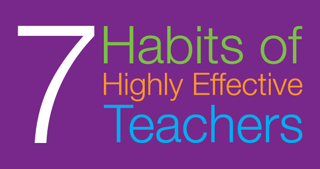Teachers—One of Our Most Powerful Tools in Education
 The year is 1996. Alanis Morissette croons about how life can be ironic, young people are shaking their hips and hands to the Macarena, the Nintendo 64 has just been released, and Tom Cruise is dominating the box office with Jerry McGuire and Mission: Impossible. While we can certainly look back on these trends and trivia about the times, it’s hard to say that any of these things had any major cultural significance.
The year is 1996. Alanis Morissette croons about how life can be ironic, young people are shaking their hips and hands to the Macarena, the Nintendo 64 has just been released, and Tom Cruise is dominating the box office with Jerry McGuire and Mission: Impossible. While we can certainly look back on these trends and trivia about the times, it’s hard to say that any of these things had any major cultural significance.
1996 also saw the publication of a key article developed by the National Commission on Teaching and America’s Future. The report, titled What Matters Most: Teaching for America’s Future, pointed out something that common sense would dictate to most anyone, yet still seems strangely elusive: the single most important factor in the effectiveness of a child’s education is the teacher. While this was not a new notion, this report, based on hundreds of studies, initiated a growing movement to identify, train, and retain good teachers.
A lot has changed in 20 years, but the need for effective teachers for our students has not. How do we recognize those highly effective teachers? What can we do to emulate their great example? The following are seven traits that highly effective teachers demonstrate.
- Highly effective teachers care about their students.
Think back to your favorite teacher. What was it about that teacher that makes you think back on him or her so fondly? I’ll never forget my pre-professional clinical experience with second graders in Sleepy Eye, Minnesota with Mr. B. Every day, students would leave the room with one of the triple-H’s – a high five, a handshake, or a hug, depending on what the student wanted. It was amazing to me to see his students – as well as older students – walk by and give Mr. B. a triple-H. It was very obvious that he cared about his students, and it was clear that his students cared about him, too. This was a great lesson that I carried with me into my classroom teaching career. The most important thing for me was to make sure that my students knew that I cared about them. Developing those relationships took time and energy, but my students learned better because of the investment.
- Highly effective teachers gather and act on frequent feedback from their students.
Formal and informal assessment of students’ learning is vital to success in the classroom. By asking questions, surveying students, getting feedback, and adapting instructional strategies as needed, teachers provide their students with the best opportunities to learn. Assessment takes many different forms. It can be as simple as a thumbs-up or thumbs-down in answer to a question. Or teachers can gather instant data using MimioVote™ assessment or online tools like Socrative or Kahoot to gather feedback from their students.Teachers can also make use of benchmarks, standardized tests, and random samples of data to inform their instruction.
- Highly effective teachers are subject-area experts, but don’t have all the answers.
There is no doubt that effective teachers need to know their content. This is both a matter of efficiency in planning and a matter of credibility. However, in a world of accelerating change, where the sum of human knowledge is doubling every year and the pace is only advancing more quickly, it is impossible to know everything about anything. What has become an even more important habit for teachers is this: when students stump them, they should respond, “I don’t know. Let’s look it up!” The ability to find information both for themselves and for their students is a vital skill for teachers.
- Highly effective teachers model and foster a lifelong love of learning.
Going along with the previous trait, highly effective teachers understand that learning is a process, not a goal, and because of that you are never done learning. Effective teachers model curiosity for their students, ask questions, and make mistakes (remember Miss Frizzle?). Effective teachers help students find the answers to their own questions, but they also continue to grow their minds through both formal and informal learning. Advanced degrees and formal classes are very valuable, but so are Twitter chats, EdCamps, and productive conversations with colleagues. The more teachers communicate with others and share ideas, the more those ideas will grow and the more effective teachers will become!
- Highly effective teachers equip their students to think independently.
It’s not enough for students to be able to produce the correct answers; they need to be able to corroborate information, evaluate the sources, and draw from their own experiences to make sure that what they hear is accurate and truthful. Effective teachers guide their students towards critical thinking and help them develop the skills they need to think for themselves and evaluate everything they hear and read.
- Highly effective teachers facilitate student collaboration.
Human beings are, by nature, social. We need to have the chance to communicate with one another, bounce ideas off each other, refine our ideas, and work together to make something greater than the sum of its parts. Highly effective teachers will look for opportunities to facilitate this kind of learning in their classroom by providing opportunities for students to communicate with each other to solve a problem or develop an idea. Real-time collaboration using low-tech ideas like butcher paper and crayons or high-tech solutions like the new MimioMobile™ application are perfect ways to get students on the same page and working together towards a common goal.
- Highly effective teachers are professionals worthy of the trust placed in them by administrators.
Effective teachers have a huge impact on student achievement, but the administrators who supervise them also have quite a role to play. Administrators who express trust and show leadership develop a culture of trust and support with teachers. In the 2007 report published by McREL, The Balanced Leadership Framework, principals are encouraged to adopt 21 leadership practices and responsibilities. Among those are developing a climate in which teachers know they have some flexibility to hone their craft with support from their leaders. When things go wrong, or when teachers have a bad day, it is really important for them to know that there is someone else in the building who cares, who understands, and who will be there to help pick up the pieces and rebuild. A principal who exhibits positive leadership will help amplify the effect of the teachers in that building.
Even after 20 years, many aspects of What Matters Most still ring true. We still need competent, qualified teachers who have a huge impact on student learning. In the right conditions, and with good support, our schools can continue a tradition of effectiveness that has made America great. To all you teachers out there who are reading this and thinking to yourself, “Duh!” — keep up the great work!
Want to connect with other educators and be fueled by valuable content? Check out Mimio's online educator community — mimioconnect.com.



